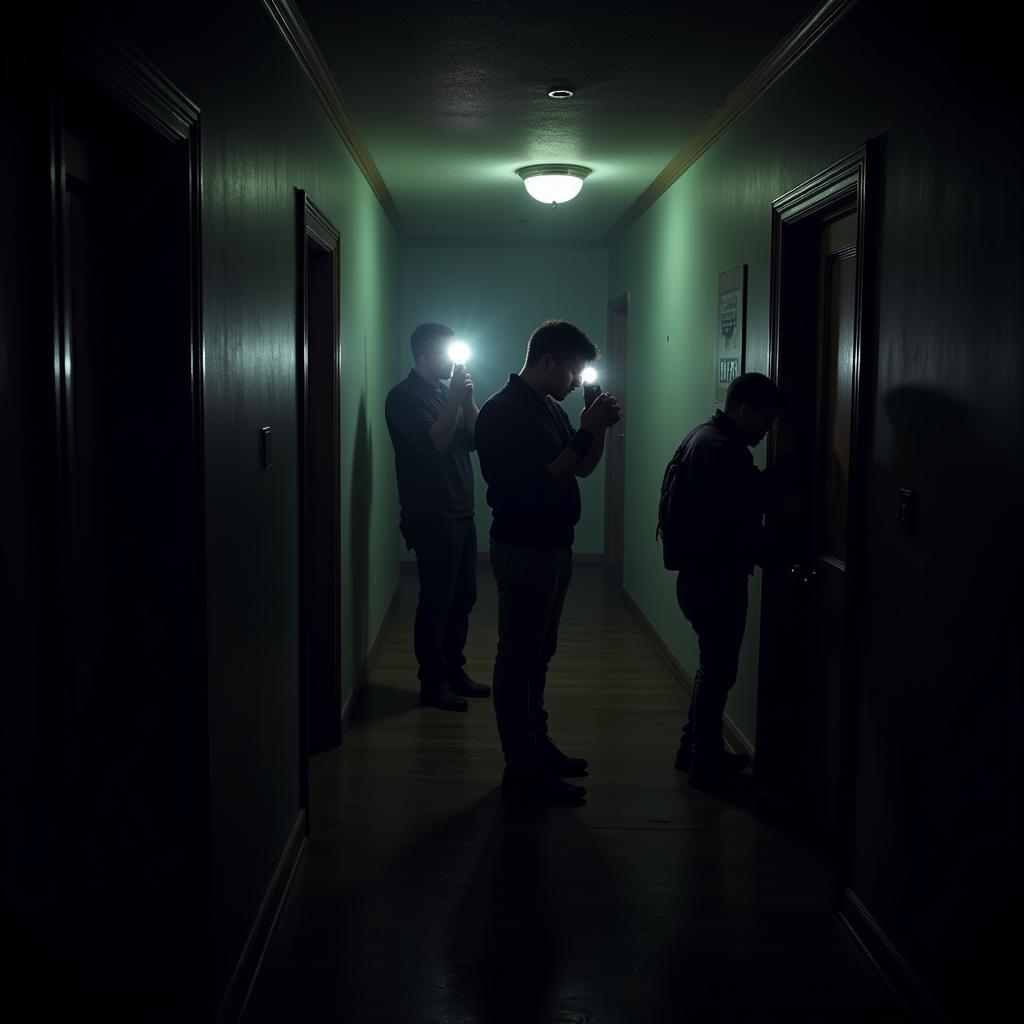Paranormal investigation, a field shrouded in mystery and intrigue, relies heavily on meticulous research and evidence gathering. While the methods used to collect data can vary greatly, “Rounds For Research” stands out as a cornerstone technique for serious investigators. But what exactly are these “rounds,” and how do they contribute to unraveling the mysteries of the paranormal?
What are Rounds for Research?
In the world of paranormal investigation, “rounds for research” refers to a structured approach to gathering evidence within a potentially haunted location. It’s not about aimlessly wandering with equipment, hoping for a ghost to make an appearance. It’s about creating a systematic plan to document the environment, analyze potential paranormal activity, and ultimately, search for answers.
Think of it as a scientific expedition into the unknown. Each “round” represents a specific phase of investigation, much like a scientist would conduct multiple experiments to test a hypothesis.
The Importance of a Systematic Approach
Why are rounds crucial? Imagine entering a darkened house rumored to be haunted. Fear and anticipation are high, but without a plan, you risk overlooking subtle cues or misinterpreting events. Rounds bring order to the chaos, allowing investigators to:
- Establish a Baseline: The first round often involves documenting the location in its natural state. This includes noting temperature variations, electromagnetic field (EMF) readings, and any pre-existing sounds or anomalies.
- Introduce Stimuli: Subsequent rounds might involve attempts to interact with potential entities. This could range from asking questions to using tools like EVP (Electronic Voice Phenomena) recorders or even attempting communication techniques like spirit boxes.
- Control Variables: By dividing the investigation into rounds, investigators can isolate potential triggers for paranormal activity. Did a specific question coincide with a temperature drop or an unexplained noise? Rounds help establish correlations.
 Paranormal Investigation Team in Action
Paranormal Investigation Team in Action
Different Types of Rounds
The specific structure of “rounds for research” can be adapted based on the investigation’s goals and the location itself. Here are a few common types:
- Environmental Rounds: These focus on documenting the physical environment and searching for natural explanations for reported phenomena.
- EVP Rounds: These center around using audio recording devices to capture potential spirit voices. Silence is often maintained to isolate any anomalous sounds.
- ITC Rounds: ITC, or Instrumental Transcommunication, rounds utilize devices designed to facilitate communication with spirits, such as ghost boxes or spirit boxes.
- Psychic Rounds: In some cases, investigators might incorporate a psychic medium into a round. The medium’s perceptions and insights are then documented and later analyzed alongside other collected data.
Analyzing the Findings: The Key to Understanding
Collecting data is only half the battle. The real work begins after the investigation, as the team meticulously analyzes the findings from each round.
- Cross-Referencing: Data from different rounds are compared to look for patterns or correlations. For example, did an EMF spike coincide with a temperature drop and an EVP recording?
- Debunking: A critical aspect of paranormal research is attempting to find rational explanations for the evidence. Could that strange sound have been plumbing, or was it truly unexplained?
- Seeking Patterns: Over time, analyzing data from multiple investigations can help researchers identify potential patterns in paranormal activity, leading to a deeper understanding of the phenomena.
Rounds for Research: A Pathway to Knowledge
In the realm of paranormal research, “rounds for research” provide a structured and systematic framework for exploration. By approaching investigations with a plan, documenting observations, and meticulously analyzing the data, researchers can move closer to understanding the mysteries that lie beyond our current perception.
While definitive answers may remain elusive, the pursuit of knowledge through disciplined research remains a core principle for any serious paranormal investigator.
FAQs
1. How long should a research round last?
The duration of each round depends on the specific goals and the location. However, maintaining rounds of 30-45 minutes with short breaks in between is generally recommended to avoid investigator fatigue and sensory overload.
2. Is it essential to have specialized equipment for conducting rounds?
While having specialized equipment like EMF readers and EVP recorders can enhance data collection, it’s not strictly necessary. Thorough observation, note-taking, and even simple audio/video recordings can be valuable tools.
3. Can anyone conduct Paranormal Research using rounds?
While anyone with an interest in the paranormal can attempt investigations, it’s important to approach the field with respect and caution. Connecting with experienced paranormal groups or researchers is recommended to learn best practices and ethical considerations.
Need Help with Your Paranormal Research?
Contact us! We are available 24/7 to assist you.
Phone: 0904826292
Email: research@gmail.com
Address: No. 31, Alley 142/7, P. Phú Viên, Bồ Đề, Long Biên, Hà Nội, Việt Nam.